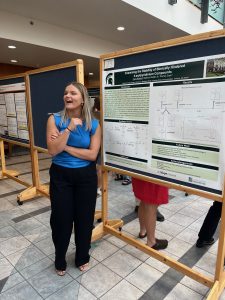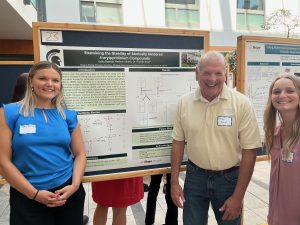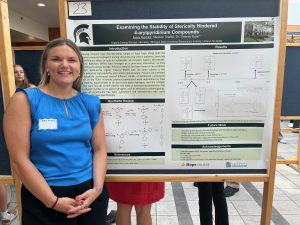Examining the Stability of Sterically Hindered 4-arylpyridinium Compounds
Avery Reimink, Madison Shaffer, Thomas Guarr
With growing concern over the dwindling supply of fossil fuels along with the humanitarian concerns involved in mining and producing lithium batteries, there has been a continuous effort to look for sustainable and scalable battery alternatives. Redox Flow Batteries (RFBs) have emerged as a promising alternative, as they provide grid-scale energy storage. Previous research has been done on the synthesis of different redox-active organic material (ROM) with the same criteria: a low reduction potential, high solubility, and a stable reduced state. Previous lab members have successfully synthesized several different classes of pyridinium compounds which act as the ROM. However, previous pyridiniums were determined to have varying stability, hypothesized to be due to the alpha hydrogens near the nitrogen atom. This work focuses on the stability and looks at synthesizing pyridiniums that have a reduced number or no alpha hydrogens, such as tert-butyl or phenyl groups. This class of pyridiniums has been synthesized and characterized using cyclic voltammetry and mass spectroscopy.
Avery attends Hope College and chose to spend her summer doing chemistry synthesis with us. Her smile and her positive attitude are infectious and have made everyone’s summer better. She did some great work on her summer project and a lot of work advancing our knowledge of electrochemical compounds. She liked it so much she is back for more and will continue working with us through the fall!


